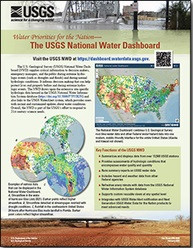
Product Details
- Product Number
- 534154
- Series
- FS-2022-3034
- Scale
- NO SCALE
- Alternate ID
- FS-2022-3034
- Authors
- INGA P LA PUMA
- Version Date
- 05/01/2022
- Countries
- USA
- Media
- WEB ONLY
- Format
- WEB ONLY
Additional Details
- Description
-
LANDFIRE Data and Applications
This product is not available for order, it can only be downloaded from here (click on image) or within the Publications Warehouse at https://pubs.er.usgs.gov/publication/fs20223034
First posted May 31, 2022
LANDFIRE help desk Earth Resources Observation and Science Center https://www.usgs.gov/centers/eros U.S. Geological Survey 47914 252nd Street Sioux Falls, SD 57198
Abstract
LANDFIRE is a Federal program that provides a suite of spatial datasets indicating areas of disturbance, vegetation and fuels distributions and structure, and historical conditions. The level of detail presented in LANDFIRE’s classifications of disturbance, vegetation, and fuels is unparalleled and can be used in a variety of applications, including (1) modeling wildfire risk and fire behavior, (2) modeling habitat and and species ranges, (3) understanding how disturbances affect the landscape, and (4) researching departure from precolonial conditions. Additionally, the all-lands paradigm of LANDFIRE mapping creates spatial data that do not stop at jurisdictional boundaries. The primary research and management applications of LANDFIRE data are detailed in this fact sheet, providing users with a well-rounded understanding of the potential of LANDFIRE’s spatial data layers.
- Survey Date
- 2022
- Print Date
- 2022
- Height In Inches
- 11.000
- Length In Inches
- 8.500
- Languages
- English





